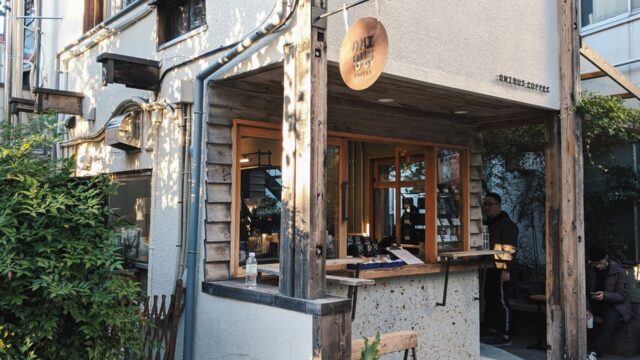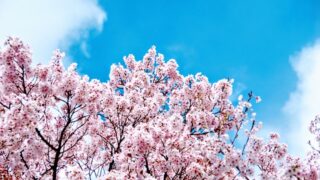Japan, a land infused with an indescribable blend of modernity and tradition, is not only a haven for tech-savvy travelers or food enthusiasts. It’s also an enriching destination for those seeking spiritual enrichment and peace. Today, we embark on a journey, not just of kilometers, but of self-discovery, through the mystical, heart-stirring Shikoku Pilgrimage.
The Shikoku Pilgrimage: An Introduction
A pilgrimage through the verdant, enchanting land of Shikoku is a timeless voyage into the heart of Japan’s spiritual and cultural heritage. Known as “Shikoku Henro” in Japanese, this pilgrimage is a 1,200-kilometer route that encompasses 88 sacred Buddhist temples scattered across the island. More than just a trek, the Shikoku Pilgrimage is a path of inner transformation, a testament to endurance and spiritual perseverance.
1. The History and Spirituality of the Shikoku Pilgrimage
The Shikoku Pilgrimage has a long and esteemed history dating back to the Heian Period (794-1185). It is intrinsically linked to Kōbō Daishi, also known as Kūkai, the founder of Shingon Buddhism in Japan. Kūkai was a monk, scholar, poet, and artist whose teachings continue to influence Japanese culture and spirituality. Legend has it that Kūkai himself embarked on the journey, visiting each of the 88 temples scattered throughout Shikoku.
As pilgrims traverse the 1,200-kilometer route, they are following in the footsteps of Kūkai, thereby participating in a spiritual journey that spans over a millennium. The pilgrimage is not just about visiting the temples; it is about paying homage to Kūkai and seeking spiritual enlightenment. This journey is believed to represent the path of spiritual growth in Shingon Buddhism, a path that leads from awakening to spiritual liberation.
Each of the 88 temples signifies a stage in this journey. Starting from the first temple, Ryozenji, the pilgrim progressively moves through temples that symbolize birth, awakening, austerity, and finally, nirvana. Each temple visit includes certain rituals, such as chanting sutras, offering coins, and lighting incense. These practices further strengthen the spiritual connection and deepen the significance of the pilgrimage.
It is also believed that Kūkai’s spirit continues to guide the pilgrims on their journey. In fact, pilgrims are often referred to as “Henro”, or “companions of Kūkai,” denoting that they are not alone on this pilgrimage. This sentiment is a source of comfort and encouragement for many who undertake this arduous journey.
To summarize, the Shikoku Pilgrimage is deeply rooted in history and spirituality. It is an exploration of Buddhist teachings, a journey through the spiritual stages of life, and a profound communion with the revered Kūkai. For every pilgrim, it is a transformative path to self-discovery and spiritual awakening.
2. Preparing for Your Shikoku Pilgrimage
The journey of the Shikoku Pilgrimage, though immensely rewarding, is not a casual undertaking. It requires careful planning and preparation, both physically and mentally, to navigate the 1,200-kilometer journey that traverses city streets, mountain paths, and countryside trails.
On a physical level, ensuring that you have the appropriate gear is paramount. Traditionally, pilgrims wear a white vest (hakui), symbolizing purity and readiness to die from worldly attachments, and carry a walking stick (kongozue), representing Kōbō Daishi’s presence. These are usually acquired at the first temple, Ryozenji. Comfortable, well-fitted walking shoes are also a must as the journey involves long hours of walking, often on uneven terrain.
Another key item to carry is the “nōkyōchō”, a book used to collect stamps and calligraphy from each temple. This serves as a record of your journey and a cherished keepsake after the pilgrimage. Additionally, it’s advisable to pack light but ensure you have essentials like water, snacks, sunscreen, rain gear, and a basic first-aid kit.
Mental preparation is equally important. The pilgrimage is more than a hike; it’s a spiritual journey that demands respect for the traditions and customs associated with it. It’s essential to cultivate an attitude of mindfulness, patience, and openness to fully embrace the experience. Understanding the basic principles of Buddhism and the significance of Kōbō Daishi can enrich the journey, enhancing the spiritual connection to the pilgrimage and its history.
Furthermore, preparation should also include familiarizing yourself with the route, weather conditions, and accommodation options along the way. A plethora of guidebooks and online resources are available to assist with this.
In essence, preparing for the Shikoku Pilgrimage is a journey in itself, a process of aligning one’s physical readiness with their mental and spiritual preparedness. It’s a commitment to embrace the challenges, experiences, and revelations that await on the path of the Shikoku Henro.
3. The Temples: Spiritual Beacons of the Journey
The 88 temples along the Shikoku Pilgrimage route are not just architectural marvels; they’re spiritual milestones, each with a unique resonance in the tapestry of the pilgrimage. They form the stepping stones on the journey of spiritual awakening, each temple a beacon calling to the innermost spirit of the pilgrim.
The pilgrimage commences at Ryozenji, a temple shrouded in serene beauty. It is here where many pilgrims purchase their white vest and walking stick, making a symbolic commitment to their spiritual journey. Nestled amidst a backdrop of lush greenery, the tranquility of Ryozenji sets the tone for the entire pilgrimage.
Further along the journey, one encounters temples like the Shosanji, Temple 12. Perched on a mountain, reaching it requires a steep climb, a metaphor for overcoming life’s challenges. The breath-taking views from the temple serve as a rewarding reminder of the fruits of determination and resilience.
The pilgrimage then leads you to Zen-like temples such as Iwayaji, Temple 45, carved into the rocky mountainside. Here, the sound of flowing water and the cool mountain air offer a respite to weary pilgrims, a space for contemplation and connection with nature.
One of the last temples, Yokomineji, Temple 60, perched high up in the mountains, is also known as the “Temple of Spiritual Heights.” It provides pilgrims with a panoramic view of Shikoku Island, embodying the spiritual and personal growth they have achieved throughout the pilgrimage.
The journey culminates at Okuboji, Temple 88. Known as the “Temple of Wishes,” it is believed to fulfill the pilgrim’s earnest prayers. The joy and sense of accomplishment upon reaching Okuboji are profound and deeply personal, marking the end of a transformative spiritual journey.
In summary, the temples of the Shikoku Pilgrimage each tell a unique story. They embody the hardships and triumphs of the spiritual journey, each offering a space for introspection and growth. They are a testament to the journey of the pilgrim, a journey of faith, resilience, and self-discovery.
4. The People You Meet: The Unsung Heroes of the Journey
Throughout the Shikoku Pilgrimage, pilgrims often find that their encounters with the local people are as impactful as their visits to the temples. The local residents, known as “osettai,” serve as the unsung heroes of the journey, offering kindness and support in various forms.
The osettai tradition is an age-old practice where locals offer alms to the pilgrims, which can range from food and drink to accommodations or even just words of encouragement. These acts of generosity stem from the belief that by aiding the pilgrims, they too participate in the pilgrimage and accumulate merit.
For instance, it’s not uncommon for locals to offer a spontaneous meal to weary pilgrims. These shared meals often transform into meaningful conversations and connections, providing an intimate glimpse into the local culture and lifestyle. These moments often offer as much sustenance for the spirit as they do for the body.
Another form of osettai is the offering of places to rest. Many locals open their homes to pilgrims for overnight stays, providing a warm bath, a hot meal, and a comforting bed. These acts of kindness are a testament to the community spirit inherent in the Shikoku Pilgrimage.
Then there are the chance encounters with fellow pilgrims, each on their own spiritual journey. Sharing the road, experiences, and insights often fosters a unique camaraderie and friendship that can last beyond the pilgrimage.
To many pilgrims, these interactions are profoundly moving, often reminding them of the fundamental goodness in humanity. The warmth and generosity experienced along the way imbue the journey with a unique richness, making the pilgrimage not just a voyage of self-discovery, but a celebration of human connection and kindness. The people you meet along the Shikoku Pilgrimage truly are the unsung heroes of the journey.
5. Shikoku’s Natural Beauty: A Feast for the Eyes
The Shikoku Pilgrimage offers not just a spiritual journey, but also a sensory immersion into the stunning natural beauty of Shikoku Island. As you traverse the 1,200-kilometer route, you’ll encounter a vivid kaleidoscope of landscapes that change with the seasons, each more breathtaking than the last.
Spring in Shikoku is marked by the ethereal beauty of cherry blossoms, their soft pink hues adorning the path. It’s as if nature itself celebrates your journey, showering you with delicate petals, encouraging each step with the promise of renewal and rebirth.
In the heat of summer, the pilgrimage winds through vibrant green rice paddies, past sleepy farming villages, and across crystal-clear rivers. The sparkle of the sun on the water and the rustle of the wind through the trees form a symphony of nature that soothes the weary pilgrim’s soul.
As autumn unfolds, the forests that line the pilgrimage path transform into an artist’s palette of reds, oranges, and golds. The crisp autumn air and the crunch of leaves underfoot create a sensory experience that invigorates the spirit and connects you deeply to the cycle of life and change.
Even in winter, the beauty of Shikoku does not diminish. The pilgrimage path through the mountains can be blanketed with snow, turning the landscape into a serene and enchanting winter wonderland. The frost-tinged temples and the quiet hush of winter bring a sense of peace and solitude, making it a time for deep introspection.
Shikoku’s natural beauty isn’t just a backdrop to the pilgrimage; it’s an integral part of the journey. It serves as a constant reminder of our connection to nature and the cycle of life, providing moments of awe and gratitude that enhance the spiritual experience. Indeed, the Shikoku Pilgrimage is not just a feast for the soul, but for the eyes as well.
6. Life After the Shikoku Pilgrimage: Taking the Lessons Home
The journey does not end when the pilgrim steps off the 88th temple of the Shikoku Pilgrimage. Instead, it’s a new beginning, as the insights gained and lessons learned on the path are carried forward into their everyday life.
One of the key takeaways from the pilgrimage is the cultivation of mindfulness. The practice of being present at each moment, whether in prayer at a temple, in conversation with a local, or in silent appreciation of a sunset, is a habit that can transform daily life. It can help foster a deeper appreciation for the small joys, a greater patience with life’s challenges, and a more profound understanding of oneself and others.
Many pilgrims find that the experience of the pilgrimage enhances their sense of gratitude. The acts of kindness received, the beauty witnessed, and the inner strength discovered all contribute to a heightened awareness of life’s blessings. This gratitude often translates into a more positive outlook, a deeper compassion for others, and a desire to give back, impacting their interactions and relationships in significant ways.
Then there’s resilience. The Shikoku Pilgrimage, with its physical demands and emotional challenges, teaches the pilgrim the power of resilience. It’s a lesson in accepting and embracing hardships as opportunities for growth, a lesson that can empower them in facing life’s struggles.
The pilgrimage also offers a unique perspective on our place in the world – a tiny yet vital part of a vast, interconnected web of life. This sense of connectedness, coupled with the teachings of Buddhism, can inspire a more conscious, empathetic approach to our relationship with others and the environment.
In essence, the Shikoku Pilgrimage is a transformative journey that continues to unfold long after you’ve left Shikoku. The wisdom it imparts seeps into every aspect of life, subtly shaping your worldview and enriching your experience of living. Life after the Shikoku Pilgrimage is a testament to the profound impact of this timeless spiritual journey.





